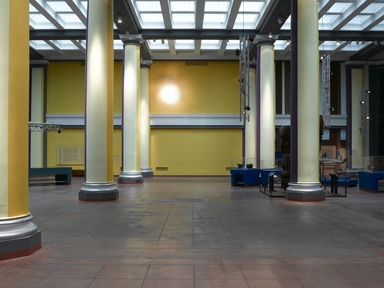

Living Legacies: The Arts of the Americas, April 16, 2004 through March 18, 2008 (Image: AON_E2004i001.jpg Brooklyn Museum photograph, 2004)

Living Legacies: The Arts of the Americas, April 16, 2004 through March 18, 2008 (Image: AON_E2004i002.jpg Brooklyn Museum photograph, 2004)
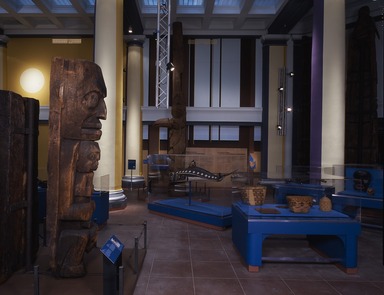
Living Legacies: The Arts of the Americas, April 16, 2004 through March 18, 2008 (Image: AON_E2004i003.jpg Brooklyn Museum photograph, 2004)

Living Legacies: The Arts of the Americas, April 16, 2004 through March 18, 2008 (Image: AON_E2004i004.jpg Brooklyn Museum photograph, 2004)

Living Legacies: The Arts of the Americas, April 16, 2004 through March 18, 2008 (Image: AON_E2004i005.jpg Brooklyn Museum photograph, 2004)

Living Legacies: The Arts of the Americas, April 16, 2004 through March 18, 2008 (Image: AON_E2004i006.jpg Brooklyn Museum photograph, 2004)
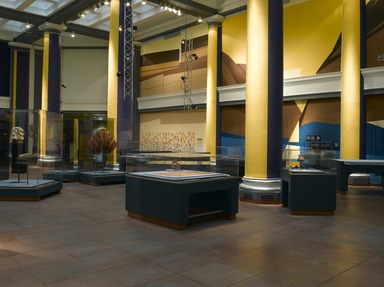
Living Legacies: The Arts of the Americas, April 16, 2004 through March 18, 2008 (Image: DIG_E2007_Americas_01_PS2.jpg Brooklyn Museum photograph, 2004)

Living Legacies: The Arts of the Americas, April 16, 2004 through March 18, 2008 (Image: DIG_E2007_Americas_02_PS2.jpg Brooklyn Museum photograph, 2004)

Living Legacies: The Arts of the Americas, April 16, 2004 through March 18, 2008 (Image: DIG_E2007_Americas_03_PS2.jpg Brooklyn Museum photograph, 2004)
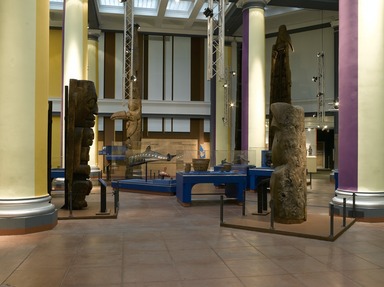
Living Legacies: The Arts of the Americas, April 16, 2004 through March 18, 2008 (Image: DIG_E2007_Americas_04_PS2.jpg Brooklyn Museum photograph, 2004)
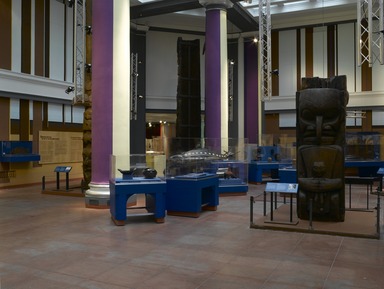
Living Legacies: The Arts of the Americas, April 16, 2004 through March 18, 2008 (Image: DIG_E2007_Americas_05_PS2.jpg Brooklyn Museum photograph, 2004)

Living Legacies: The Arts of the Americas, April 16, 2004 through March 18, 2008 (Image: DIG_E2007_Americas_06_PS2.jpg Brooklyn Museum photograph, 2004)

Living Legacies: The Arts of the Americas, April 16, 2004 through March 18, 2008 (Image: DIG_E2007_Americas_07_PS2.jpg Brooklyn Museum photograph, 2004)
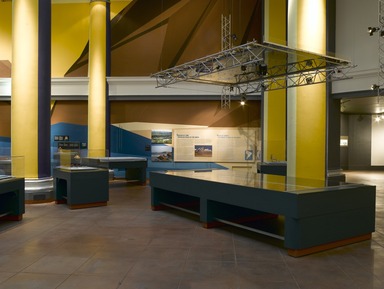
Living Legacies: The Arts of the Americas, April 16, 2004 through March 18, 2008 (Image: DIG_E2007_Americas_08_PS2.jpg Brooklyn Museum photograph, 2004)
Living Legacies: The Arts of the Americas
-
Enduring Heritage: The Art of the Northwest Coast
More than twenty tribes—referred to as First Nations in Canada and Native Americans in the United States—live along the coast of lower Alaska, British Columbia, and Washington, in an area known as the Northwest Coast region. Although these tribes have distinct cultures, they are linked by similar environments, religious beliefs, and strong traditions based on chiefdoms, rank, and inheritance of family identity. For at least six thousand years—from prehistoric times to the present—Northwest Coast artists have carved, painted, and woven objects, creating a rich artistic heritage. Each artwork embodies a family or spiritual history that is “owned” and passed down from one generation to the next.
Perhaps towering cedar totem poles, carved crests, and representations of ancestral stories serve as a tribe’s most recognized symbols, but simple spoons, feast dishes, and baskets also fulfill important roles. Elaborate masks—some representing founding First Ancestors—are believed to transform their wearers, usually men, into supernatural entities. Ancestral stories may be told through dances performed during Winter Ceremonies or potlatches, gift-giving ceremonies held inside large ceremonial houses. Masks and costumes, stored in treasure boxes, are brought out and “danced” by the families or individuals who own them. Other rituals, such as the Hamat’sa Initiation, are sacred in nature.
Stewart Culin served as the Museum’s first curator of ethnology from 1903 to 1929. He created the Museum’s collection during expeditions to the Northwest Coast in 1905,1908, and 1911. Culin relied greatly on the expertise of local collectors such as Dr. Charles Newcombe (1851–1924) and Lieutenant George Thorton Emmons (1852–1945), and on exchanges made with the Field Museum in Chicago. Culin believed, as did numerous museum curators at the time, that the Northwest Coast societies were dying out. But Northwest Coast cultures have survived and evolved, adapting to change while maintaining their own traditions.
In the past, it was customary for Northwest Coast men to be carvers and women to be weavers, but today such separate artistic roles have been eliminated. Contemporary artists may use power tools, acrylic paints, and modern fabrics such as imported linen, but designs are still seen as inherited. Through the enduring practice of ceremonies and innovative artistic creation, the Northwest Coast peoples acknowledge their heritage, affirm their present identities, and ensure the future of their cultures. -
Refurbished Hall of the Americas to Open in Celebration of Museum’s New Front Entrance and Plaza
The Brooklyn Museum of Art’s Hall of the Americas will be refurbished and completely reinstalled this spring for the first time since the mid-1960s. The new presentation, entitled Living Legacies: The Arts of the Americas, is the first of two phases of reinstallation and will include selections from the Museum’s renowned holdings of Meso-American, South American, and Native American material. This thematic exhibition will open on April 16, 2004 to coincide with the reopening of the new front entrance pavilion and plaza.
The hall’s colonnaded space, designed by architects McKim, Mead, & White, will feature bright colors and new display cases. Nearly all of the works in this new presentation have been off view for three years, many have not been on view for several decades. All have been surveyed, and treated if necessary, by the Museum’s Conservation Laboratory. Nancy Rosoff, the Andrew W. Mellon Curator and Chair of Arts of the Americas, is project director. The presentation has been designed by Matthew Yokobosky, BMA Chief Designer.
Organized to illustrate the diversity and continuity of artistic traditions, Living Legacy: The Arts of the Americas includes three thematic sections. Threads of Time: Woven Histories of the Andes features more than thirty Andean textiles and related materials from the Museum’s holdings of some 800 objects, which comprise what is considered one of the most important collections of its kind outside of South America. The centerpiece of this exhibition is the “Paracas Textile,” made about two thousand years ago on Peru’s South Coast and thought by experts to be one of the most important Andean textiles in existence. Renowned for its beauty and demonstration of technical virtuosity, this small mantle has a center field of stylized faces surrounded by an elaborate border of ninety figures of humans, plants, animals, and fantastic beings. Among the other works in this presentation will be a Nasca mantle embroidered with fish created some time between the first and sixth century A.D.; a remarkable Wari hat crafted of cloth, reed, and feathers; a miniature Wari woven tunic; a tunic from Peru’s Central Coast adorned with painted birds and fish; a weaver’s work basket, ancient spindles, and a wooden loom. Contemporary textiles purchased recently in Peru and Bolivia, along with photographs and videos will demonstrate the continuing vitality
of this artistic tradition. This section of the exhibition is being organized by Project Director Nancy Rosoff, with the assistance of Research Associate Georgia de Havenon.
Enduring Heritage: Art of the Northwest Coast will present more than thirty-five objects from seven cultures. Many of these items were created in the late nineteenth century and acquired in the early twentieth century by Stewart Culin, the Museum’s first Curator of Ethnology (1902–1929), who provided detailed documentation for many of the objects he obtained. Featured will be the Kwakwaka’wakw Speaker Figure, two house posts by an unknown Heiltsukartist, and the Haida totem pole from Canada’s Queen Charlotte Islands. As part of the reinstallation, the totem poles will undergo on-site cleaning and conservation, a process that visitors will be able to view. Among the other works in this exhibition will be a range of household and ceremonial objects, including a Kwakwaka’wakw Thunderbird Transformation mask, used by dancers in potlatch ceremonies; a Bella Bella wooden feast ladle with skull designs; a Haida trick chest, used during performances to conceal a small child; and a Tsimshian carved wood chief’s headdress with a grizzly bear crest inlaid with abalone. Enduring Heritage is being organized by Susan Kennedy Zeller, Assistant Curator, Arts of the Americas.
The third thematic section of this phase of the reinstallation is entitled Stories Revealed. It presents nearly twenty works reflecting how various indigenous cultures throughout the Americas portray and preserve history, knowledge, and religious beliefs. Several items in this section include examples of pictographic “writing,” among them a painted elk hide robe by Shoshone artist, Cadzi Cody, that contains a complex narrative of a sun dance, an ancient Mimbres bowl decorated with dancing figures, and an Alaskan scrimshaw walrus tusk portraying scenes of hunting and fishing. Post-Conquest documents, rendered on plant-fiber paper, illustrate how the pictorial tradition later came to combine indigenous and European elements. Stories Revealed is organized by Nancy Rosoff and Susan Kennedy Zeller.
-
La Herencia Perdura: El Arte de la Costa Noroeste de Norteamérica
Más de veinte tribus indígenas viven en la Costa Noroeste de Norteamérica, que comprende el territorio costero del surde Alaska, Columbia Británica y el Estado de Washington. Estas tribus son llamadas las Primeras Naciones en Canadá y Nativos Americanos en los Estados Unidos. Aunque estas tribus tienen distintas culturas, están enlazadas unas a otras porque comparten similares creencias religiosas, medio ambiente y fuertes tradiciones basadas en jerarquías e identidades grupales heredadas. Por al menos 6000 años, es decir, desde períodos prehistóricos hasta el presente, los artistas de la Costa Noroeste han esculpido, pintado y tejido, creando una rica herencia artística. Cada pieza incorpora una historia familiar o espiritual propia, que se “posee” y transmite de generación en generación.
Los símbolos más reconocibles de estas tribus son los altos tótem de madera de cedro, los emblemas tallados y las representaciones de historias ancestrales, aunque objetos sencillos como cucharas, platos ceremoniales y canastas cumplen también un rol importante. Máscaras muy elaboradas, algunas de las cuales representan a los Primeros Ancestros fundadores, tendrían el poder de transformar a sus usuarios (generalmente hombres) en seres sobrenaturales. Las historias ancestrales son relatadas por medio de danzas que se realizan en las Ceremonias de Invierno o potlatches, donde se intercambian regalos y que tienen lugar dentro de grandes casas ceremoniales. Las máscaras y los trajes de danza, que permanecen guardados en cajas especiales, se sacan durante las ceremonias y “bailan” con la familia o el individuo que las tiene en su poder. Otras ceremonias, como el rito de iniciación Hamat’sa, son de carácter sagrado.
Stewart Culin, quien fue el primer curador de etnología del Museo desde 1903 hasta 1929, formó la colección del Museo durante expediciones a la Costa Noroeste llevadas a cabo en 1905, 1908 y en 1911. Culin tuvo asesoría de coleccionistas expertos de la región, como el Dr. Charles Newcombe (1851–1924) y el teniente George Thorton Emmons (1852–1945). También realizó canjes con el Museo Field de Chicago. Culin creía, como muchos otros curadores de aquel entonces, que las sociedades de la costa noroeste estaban a punto de extinguirse. Sin embargo, dichas culturas han sobrevivido y evolucionado, adaptándose a la sociedad moderna y manteniendo a la vez sus tradiciones.
En el pasado eran los hombres los que se dedicaban al tallado, mientras las mujeres tejían. En el presente esta división del trabajo ha desaparecido. Los artistas contemporáneos usan instrumentos eléctricos, pinturas acrílicas y telas modernas como el lino, pero los diseños se han mantenido, transmitiéndose de generación en generación. A través de la continuidad en las practicas ceremoniales y la innovadora creación artística, la gente de la Costa Noroeste se mantiene fiel a su herencia, reafirmando su identidad y asegurando el futuro de su cultura. -
Stories Revealed: Writing Without Words
Indigenous peoples throughout the world have developed sophisticated methods of recording and transmitting information, primarily in pictorial and glyphic form. In the Western Hemisphere, ancient civilizations such as the Cupisnique (900–200 B.C.) and Moche (A.D. 200–800) of Peru, the Maya (A.D. 300–900) of Mexico and Central America, and the Mississippian people (A.D. 1200–1500) of the southern United States documented myths, battles, royal events, and religious ceremonies visually, through stone monuments, ceremonial architecture, vessels, ornaments, and works on paper. Many Andean cultures in South America recorded information via textiles (see the nearby “Threads of Time” installation).
The Aztecs of Mexico (A.D. 1350–1521) developed a writing system that, like that of the Maya, combined pictorial images with hieroglyphic texts. They painted vibrant manuscripts, or codices, on animal hides, cloth, and amatl (paper made from fig-tree bark). With the arrival of Europeans, the Aztecs began incorporating alphabetic texts into their native accounts, as seen on codices produced from the mid-sixteenth through eighteenth centuries.
For more than five hundred years, North American Plains Tribes have painted action-packed narratives, recording individual and tribal deeds on hides and shirts. Delicately etched scenes dance across ivories produced by arctic Eskimo artists (A.D. 1700–1900).
Indigenous peoples have also recorded information in subtle, abstract, mathematical, and symbolic forms, such as an Inca knotted string khipu, a Shipibo-Conibo vessel, or a Taquile woven belt. Each of the stunning works presented here reveals a hidden story—demonstrating that alphabetic writing is simply one way of recording and communicating information. -
Historias Reveladas: Escribiendo Sin Palabras
Los pueblos indígenas alrededor del mundo han desarrollado sofisticados métodos para registrar y transmitir información, principalmente en forma pictórica y glífica. En el Hemisferio Occidental, antiguas civilizaciones como la Cupisnique (900–200 a.C.) y Moche (200–800 d.C.) en el Perú, la Maya (300–900 d.C.) en México y América Central, y la cultura que existió alrededor del Río Mississippi (1200–1500 d.C.) al sur de los Estados Unidos documentaron visualmente mitos, batallas, eventos reales y ceremonias religiosas, por medio de monumentos de piedra, arquitectura ceremonial, vasijas, ornamentos y papel. Muchas culturas andinas en Sudamérica registraron información por medio de textiles (ver la exposición vecina “Hilos de Tiempo”).
Los Aztecas de México (1350–1521 d.C.) desarrollaron un sistema de escritura que, al igual que el Maya, combinaba imágenes con texto jeroglífico. Ellos pintaron vibrantes manuscritos o códices en pieles de animales, tela y amatl (papel hecho de corteza de higuera). Con la llegada de los europeos, los Aztecas incorporaron texto alfabético a sus reseñas nativas, como se puede apreciar en los códices escritos desde mediados del siglo XVI hasta el siglo XVIII.
Por más de 500 años, las tribus de Norteamérica pintaron narrativas cargadas de acción, registrando asuntos tribales e individuales en cuero y camisas. Escenas delicadamente grabadas en marfil fueron producidas en el ártico por artistas Esquimales (1700–1900 d.C.). Los pueblos indígenas también grabaron información de forma sutil, abstracta, matemática y simbólica, como se observa en los khipus o cuerdas con nudos Incas, en una vasija Shipibo-Conibo o en una faja Taquile. Cada una de estas asombrosas obras revela una historia oculta, demostrando así que la escritura alfabética es simplemente un medio más para registrar y transmitir información. -
Threads of Time: Woven Histories of the Andes
Weaving is one of the oldest and most symbolically rich artistic traditions in the central Andean region, an area that includes present-day Ecuador, Peru, Bolivia, Chile, northwestern Argentina, and southern Colombia. Indigenous peoples in this region speak native languages such as Quechua and Aymara, in addition to Spanish. The earliest known Andean textiles were discovered on the northern coast of Peru and date to about 3000 B.C. These dazzling works of art are remarkable for the skills required to create them, the complexity of their designs, and their vibrant colors.
Andean textiles are the result of an extremely labor-intensive process that requires herding camelids (llamas, alpacas, and vicuñas); planting cotton; collecting camelid and cotton fibers and natural pigments; dyeing, spinning, and plying yarn; and, finally, weaving and finishing the textile itself. In pre-Columbian times (before the arrival of the Spanish conquerors in 1532), textiles fulfilled important social and religious functions in indigenous society; they indicated social status and were considered sacred and more valuable than gold.
The textiles presented here cover a time period of more than two thousand years and express complex social, ecological, and philosophical concepts. Images of plants, animals, human beings, and deities, for example, provide insights about the Andean environment and the religious and ideological beliefs of its inhabitants. Textiles therefore served—and continue to serve—as “written texts,” especially since ancient Andean peoples had no known writing system. Some scholars have suggested that the weave structures themselves were metaphors for the social, economic, and political organization of the Andean world. Textiles remain an essential part of life for the people of this region, serving as bearers of cultural traditions and woven links to the past. -
Hilos de Tiempo: Historias Tejidas de los Andes
El tejido es una de las tradiciones artísticas más antiguas y simbólicamente complejas de los Andes centrales, un área que incluye lo que es hoy Ecuador, Perú, Bolivia, Chile, el noroeste de Argentina y el sur de Colombia. La población indígena de estos países habla todavía su lengua nativa, Quechua y Aymara por ejemplo, así como también el Español. Los textiles más antiguos que se conocen provienen de la costa norte del Perú y datan aproximadamente del año 3000 A.C. Estas exquisitas obras de arte se destacan por la habilidad técnica necesaria para su elaboración, la complejidad de sus diseños y sus vibrantes colores.
Los textiles andinos son producto de un arduo proceso de trabajo que requiere la cría de camélidos (llamas, alpacas y vicuñas), cultivo de algodón, recolección de fibras de algodón, camélido y pigmentos naturales, teñido de estas fibras animales y vegetales, hilado y retorcido, y finalmente tejido y acabado del textil en sí. En tiempos prehispánicos (antes de la llegada de los conquistadores españoles en 1532), los textiles desempeñaban un importante papel en la sociedad indígena: algunos indicaban estatus social, otros eran considerados sagrados y por consiguiente más valiosos que el oro. Muchas veces, estos tejidos se usaban—y aun se usan—como “textos escritos” en pueblos que carecían de un sistema de escritura conocido.
Las piezas aquí expuestas pertenecen a diversos períodos de tiempo y en total cubren 2000 años de historia, expresando complejos conceptos sociales, ecológicos y filosóficos. Imágenes de plantas, animales, seres humanos y divinidades, por ejemplo, nos dan una idea de el medio ambiente Andino y de las creencias religiosas e ideológicas de sus habitantes. Algunos especialistas sugieren que la estructura misma del tejido es una metáfora de la organización social, política y económica del mundo Andino. Los textiles continúan siendo una parte esencial en la vida de la gente de los Andes. Son portadores de sus tradiciones culturales y vínculos que los enlazan al pasado.
-
September 1, 2003
The Brooklyn Museum of Art's Hall of the Americas will be refurbished and completely reinstalled this spring for the first time since the mid-1960s. The new presentation, entitled Living Legacies: The Arts of the Americas, is the first of two phases of reinstallation and will include selections from the Museum' renowned holdings of Meso-American, South American, and Native American material. This thematic exhibition will open on April 16, 2004 to coincide with the reopening of the new front entrance pavilion and plaza.
The hall's colonnaded space, designed by architects McKim, Mead, & White, will feature bright colors and new display cases. Nearly all of the works in this new presentation have been off view for three years, many have not been on view for several decades. All have been surveyed, and treated if necessary, by the Museum's Conservation Laboratory. Nancy Rosoff, the Andrew W. Mellon Curator and Chair of Arts of the Americas, is project director. The presentation has been designed by Matthew Yokobosky, BMA Chief Designer.
Organized to illustrate the diversity and continuity of artistic traditions, Living Legacy: The Arts of the Americas includes three thematic sections. Threads of Time: Woven Histories of the Andes features more than thirty Andean textiles and related materials from the Museum's holdings of some 800 objects, which comprise what is considered one of the most important collections of its kind outside of South America. The centerpiece of this exhibition is the "Paracas Textile," made about two thousand years ago on Peru's South Coast and thought by experts to be one of the most important Andean textiles in existence. Renowned for its beauty and demonstration of technical virtuosity, this small mantle has a center field of stylized faces surrounded by an elaborate border of ninety figures of humans, plants, animals, and fantastic beings. Among the other works in this presentation will be a Nasca mantle embroidered with fish created some time between the first and sixth century A.D.; a remarkable Wari hat crafted of cloth, reed, and feathers; a miniature Wari woven tunic; a tunic from Peru's Central Coast adorned with painted birds and fish; a weaver's work basket, ancient spindles, and a wooden loom. Contemporary textiles purchased recently in Peru and Bolivia, along with photographs and videos will demonstrate the continuing vitality of this artistic tradition. This section of the exhibition is being organized by Project Director Nancy Rosoff, with the assistance of Research Associate Georgia de Havenon.
Enduring Heritage: Art of the Northwest Coast will present more than thirty-five objects from seven cultures. Many of these items were created in the late nineteenth century and acquired in the early twentieth century by Stewart Culin, the Museum's first Curator of Ethnology (1902–1929), who provided detailed documentation for many of the objects he obtained. Featured will be the Kwakwaka'wakw Speaker Figure, two house posts by an unknown Heiltsuk artist, and the Haida totem pole will undergo on-site cleaning and conservation, a process that visitors will be able to view. Among the other works in this exhibition will be a range of household and ceremonial objects including a Kwakwaka'wakw Thunderbird Transformation mask, used by dancers in potlatch ceremonies; a Bella Bella wooden feast ladle with skull designs; a Haida trick chest, used during performances to conceal a small child; and a Tsimshian carved wood chief's headdress with a grizzly bear crest inlaid with abalone. Enduring Heritage is being organized by Susan Kennedy Zeller, Assistant Curator, Arts of the Americas.
The third thematic section of this phase of the reinstallation is entitled Stories Revealed. It presents nearly twenty works reflecting how various indigenous cultures throughout the Americas portray and preserve history, knowledge, and religious beliefs. Several items in this section include examples of pictographic "writing," among them a painted elk hide robe by Shoshone artist, Cadzi Cody, that contains a complex narrative of a sun dance, an ancient Mimbres bowl decorated with dancing figures, and an Alaskan scrimshaw walrus tusk portraying scenes of hunting and fishing. Post-Conquest documents, rendered on plant-fiber paper, illustrate how the pictorial tradition later came to combine indigenous and European elements. Stories Revealed is organized by Nancy Rosoff and Susan Kennedy Zeller.
Brooklyn Museum Archives. Records of the Department of Public Information. Press releases, 1995 - 2003. 07-12/2003, 053-54
View Original

